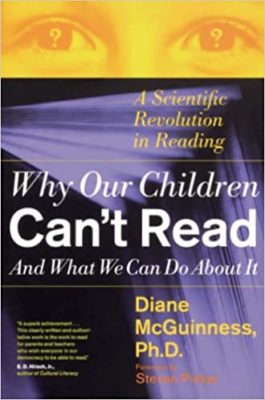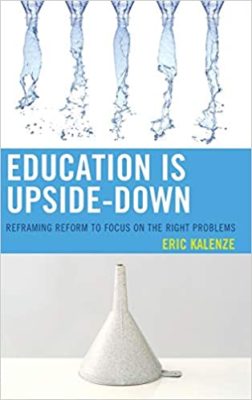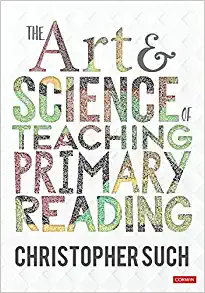Over the holidays, we all need to take a break and enjoy time with family and friends. However, amongst the ribbons, reindeer and rejoicing, there may also be space for a little retrospection, reflection, reading… and even rereading. Reading specialist, Miriam Fein, explores the benefits of giving new consideration to an already well thumbed book.
When I open social media, I often get exciting announcements of a new book, article, podcast or video about education or literacy. The pull of novelty is strong, but what about revisiting older works? Professional rereading in light of more recent experiences can remind us of key ideas, deepen original insights, or spark new ones that we may not have been prepared for earlier. Here are some reflections on three books I reread recently:
Why Our Children Can’t Read and What We Can Do About It by Diane McGuinness
Diane McGuinness was a cognitive psychologist who wrote widely about early reading instruction and reading difficulties. She influenced the development of many synthetic and linguistic or “speech-to-print” phonics programs. Originally published in the late 1990’s, this is a book I returned to after almost a decade since I first read it. As I did, I also had the opportunity to participate in a wonderful online book discussion group.
I was again struck by McGuinness’s depth of knowledge and insight about the history of writing systems and its relevance to the teaching of reading and writing. She writes,
“…it is the phonological or syllable structure of the language which determines how all writing systems are designed. And in every case, when an alphabet could be avoided, it was. This means that nobody used an alphabet unless they absolutely had to.”
It’s an essential insight for teachers. Learning to read an alphabet requires us to segment and blend individual phonemes, an inherently difficult task, but one that cannot be avoided or minimized in teaching because this is the way our writing system was designed. We can’t risk prompting beginning readers trying to go around it (by, for example, drawing their attention to larger units like onsets, rimes, syllables or morphemes at the very beginning); we need to make sure our students go through it and master phonemic skills.
McGuinness’ provides vivid examples of the compensatory word reading strategies that may develop when our teaching isn’t crystal clear. Some may try to use a combination of letter names and sounds. Others rely on pictures, context, and whole word memorization. Others are part word assemblers, perhaps reading “hated” as “hat’-’ate’-“ted” based on the parts they know. Some mix and match all of the above. McGuinness stresses that children who use these strategies as beginners are at risk of reading problems, and, crucially, that teachers have the power to prevent children from adopting them in the first place.
Another key idea is the importance of teaching reading as a real problem. Too often the alphabetic code is taught in an abstract way, and children have to make leaps to understand how they’re supposed to apply the phonics they’re learning to actual reading and writing. This made me consider the drawbacks of decontextualized grapheme flashcards and oral phonemic awareness exercise, and the advantages of learning phoneme-grapheme correspondences and segmenting, blending, and manipulating phonemes in the context of building, reading, and writing real words.
 Education is Upside-Down by Eric Kalenze
Education is Upside-Down by Eric Kalenze
In his 2014 book, Kalenze, currently a high school English teacher and curriculum development lead, skillfully unravels the often unexamined ideas, assumptions, and goals that underlie the US education system. He argues that any attempt to improve education, no matter how well intentioned or designed, will fail if these foundational principles are not understood, and to a large degree, changed. He compares the system to a funnel that has been inverted by a disdain for facts and “lower order” knowledge and by a glorification of student preferences and interests that has its roots in the early 20th century ideas about education as centered on the growth of the individual child. The result is a system that allows some children, the ones who are able to fit through the narrow opening at the top, to flow right through as it forces far too many to “spill over the sides.”
It’s obvious how this upside down funnel works when it comes to early reading instruction. Many teachers continue to emphasize “engagement” first, are reluctant to ask small children to do hard, “formal” things, and believe that reading should largely “emerge” in a pleasurable way from exposure, a bit of instruction, and the child’s own development.
Unfortunately, we have all watched as children who arrive at school without certain biological and/or environmental advantages spill over the sides of this upside down funnel. I found myself thinking about early screening initiatives intended to identify children for risk of reading difficulty. These efforts can be very useful, but are we also checking our funnel on day one to make sure it’s right side up?
 The Art and Science of Teaching Primary Reading by Christopher Such
The Art and Science of Teaching Primary Reading by Christopher Such
It’s only been a year or so since this book came out, but I felt compelled to read it again without delay. The author has a gift for encapsulating vast bodies of research and his own practical wisdom in clear, concise prose, somehow managing to distill it all without sacrificing nuance.
For example, the brief chapter on dyslexia shines a light on the different ways the term is understood and guides us towards a practical and accurate understanding, I was struck by the elegance of the sentence: “In short, dyslexia can be thought of as an extreme difficulty in word reading that has causes that are not purely environmental,” and also by the summary at the end of the chapter:
“Understand that when a child struggles far more than most with word reading, whether or not they are defined as dyslexic should not make a qualitative difference to the support they receive: they require timely, focused support relating to the aspects of word reading with which they struggle; this is likely to involve high-quality phonics teaching involving phoneme manipulation and/or fluency practice.”
A recurring theme in the book is how “understanding the underlying principles of a concept provides a stable foundation for practical classroom choices.” To cope with the deluge of programs, activities, tips, debates, and discussions that the Science of Reading movement has unleashed, I agree it’s crucial that we anchor ourselves in an understanding of “the why”. Christopher Such’s book is an excellent guide to the “why,” along with the “what” and “how.”
I’m so glad I took the time to revisit these books. I recommend them for a first or second read, and I also recommend browsing your own bookshelves or e-reader library to find books that might be worth reading again!
#educationresearch #structuredliteracy #explicitteaching
* * *
This is a guest blog by Miriam Fein. Miriam is a speech-language pathologist and licensed reading specialist. She lives near Boston, Massachusetts, and supports students from early elementary through high school with reading, spelling, writing, and language skills. She believes in the power of evidence-informed, systematic, and compassionate teaching for all learners.


